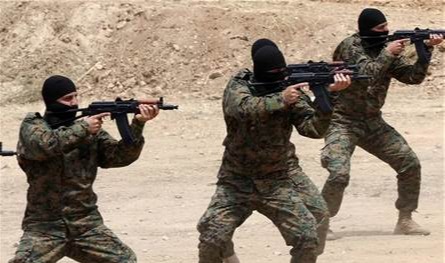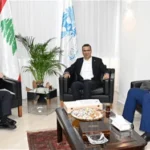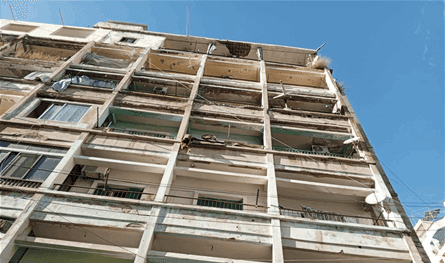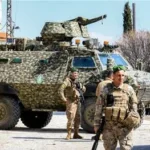
The Israeli newspaper “Jerusalem Post” published a new report in which it talked about the issue of disarming the “Hamas” movement in Gaza, within the framework of US President Donald Trump’s plan that aims to end the war there.
And in her report, which he translated “Lebanon 24”The newspaper said, “With the ongoing discussions in Egypt about Trump’s peace plan for Gaza, it is worth considering what history can tell us about how to actually disarm Hamas. Disarming the movement will be one of the main issues that will be discussed.”
He continued: “Looking at some of the recent disarmament processes, and studying what succeeded and what failed in achieving peace, can help better prepare for successful disarmament in Gaza, and delving deeper into history can be useful for what might happen in Gaza.”
The report spoke about the case of Lebanon, saying that the latter “has not yet succeeded in disarming Hezbollah,” and added: “Perhaps one of the most recent examples of disarmament attempts is the efforts currently being made in Lebanon to disarm Hezbollah. The Iranian-backed party has controlled southern Lebanon for decades, and its roots go back to the First Lebanon War, when the party was founded to confront an Israeli invasion that aimed to stop the Palestine Liberation Organization’s attacks on “Israel.”
He continued: “After the Second Lebanon War in 2006, Hezbollah replaced the ineffective Lebanese government in parts of the country, controlling education, health care, media, etc. Also, its members were considered stronger than the Lebanese army, which meant it was impossible to confront its influence from within the country, despite the UN Security Council resolutions of 2004 and 2006 requiring the disarmament of non-governmental militias in Lebanon.”
He added: “In September 2024, Israel launched an operation that resulted in the killing of members of Hezbollah and high-ranking officials, most notably its former Secretary General, Mr. Hassan Nasrallah.”
The report stated that “the assassination of Nasrallah was a shock to Hezbollah, but it was not the end of the Israeli operation,” and continued: “Days later, Israeli forces entered southern Lebanon and moved north quickly, while Hezbollah, which was weakened, was unable to stop the invasion. By the end of November 2024, a ceasefire was agreed upon with American and French mediation, with conditions that include disarming Hezbollah.” For its part, the Lebanese government, seeking to regain power, accepted the agreement and the responsibility to disarm the Shiite terrorist group that has controlled the country for decades.
He continued: “Since then, the Lebanese army has begun preliminary steps to pave the way for the disarmament process, without apparent resistance from Hezbollah. However, the party has explicitly refused to disarm, pledging to retain its weapons and presence in Lebanon. In fact, the strong support it enjoys from the Shiites in Lebanon will make it difficult for the Lebanese government to completely eliminate Hezbollah.”
The report talked about other examples of successful disarmament in modern history, noting that this happened in Indonesia through the Free Aceh Movement, and added: “The movement sought the independence of the Aceh region in Indonesia, and fought the state government between 1976 and 2005.”
He continued: “In the first decade of the 21st century, the movement was severely damaged by a government crackdown and a natural disaster. After the tsunami struck Aceh, the movement weakened and was forced to negotiate with the government, agreeing to dissolve itself in exchange for representation from Aceh and economic benefits for the region, including retaining 70% of the income from local products. Subsequently, a peace agreement was officially signed in 2005, and stipulated that the movement Free Aceh will disarm, that the government will withdraw non-local military and police forces, and that an independent commission will oversee the disarmament and reintegration of Free Aceh Movement members into society.”
He continued: “After that, the military wing of the Free Aceh Movement was immediately dissolved in 2005, but the political wing of the movement still exists. After that, the movement’s founder, Hassan Di Tiro, returned to Indonesia from exile in 2008, which highlighted the success of the peace initiative.”
He continued: “The disarmament process has been successfully facilitated by an independent committee, and peace and reconciliation have been achieved between members of the Free Aceh Movement, the people of Aceh and the Indonesian government.”
The report touched on the disarmament process in the Philippines, describing it as an unsuccessful step, and added: “In 2015, the disarmament of the Moro Islamic Liberation Front began in Qalbiyya. This movement is an armed group that broke away from the Moro National Liberation Front, which sought to establish an autonomous region for the Moro people in Mindanao, separate from the central government.”
He added: “The Moro Islamic Liberation Front was active between 1977 and 2014, and carried out attacks and assassinations, declaring jihad against the government, its citizens, and all those who support it, despite its lack of official affiliation with Al-Qaeda.”
He continued: “While the Moro National Liberation Front accepted semi-autonomous agreements in 1987, the Moro Islamic Liberation Front rejected it and continued its insurgency. However, a ceasefire agreement was put in place between the government of Manila and the Moro Islamic Liberation Front in 1997, and was canceled by the Philippine army in 2000. In 2005, in the midst of the resumption of peace negotiations, the Moro Islamic Liberation Front attacked government forces, which led to To thwart the ceasefire talks.”
He said: “In 2011, the Moro Islamic Liberation Front backed down from its demands for complete independence and sought to establish a sub-state within the Philippines. In 2014, the Moro Islamic Liberation Front and the government signed a peace agreement aimed at creating an independent Islamic entity (Bangsamoro) by 2016, in exchange for the dissolution of the Moro Islamic Liberation Front forces.”
He continued: “The MILF was scheduled to hand over its firearms to a third party chosen in agreement with the government. In 2015, the disarmament process began, and in 2021, 12,000 fighters were demobilized; however, as of 2023, they have not been completely disarmed. Currently, the MILF still controls most of Mindanao, and is active in the Bangsamoro. However, it is at peace with Government of the Philippines, and disarmament and peace efforts have achieved only limited success.”
The report stated that in Indonesia, disarmament was only possible through an independent body that was fully established to facilitate the disarmament process, and added: “In contrast, the disarmament attempt in Lebanon and the Philippines failed partly because there was no independent body to supervise it.”
He continued: “Lebanon and the Philippines are showing attempts to disarm groups rooted in the infrastructure and management of the region’s affairs. However, it is believed that the limited successes so far in completely disarming armed groups are more useful for understanding how to disarm Hamas, as happened in Indonesia, as the matter involves a struggle to overcome the control of militias that play a major role in society.”
He concluded: “Trump’s twenty-point plan includes many statements about dismantling Hamas and deradicalization in Gaza, but it decisively fails to explain how to achieve this. However, the introduction of a new ruling system is an important step towards deradicalization, but it does not actually implement it. Also, the eighteenth point stipulates the establishment of an interfaith dialogue, but it does not detail how to achieve this. However, the lesson should be The failures in Lebanon and the Philippines are the willingness to make the changes we want to see, not just demand them.”
Source:
Translation of “Lebanon 24”
Related topics

















